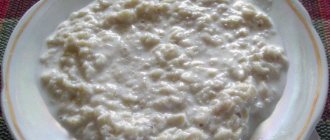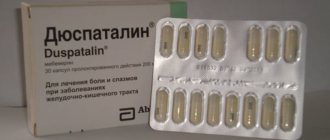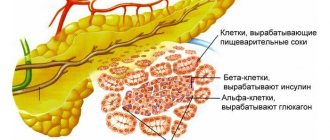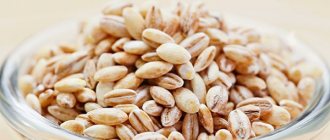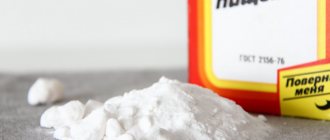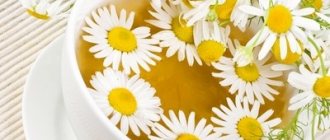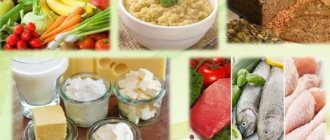Semolina porridge is a familiar product from childhood. Despite this, few people know what it is made from and what beneficial properties it has. Semolina is a cereal made from the core of wheat; its composition is classified as carbohydrate products. Semolina porridge for pancreatitis is allowed for consumption, but only if prepared taking into account special recommendations.
Semolina porridge in the patient's diet
Not only pancreatitis is an indication for prescribing semolina, but also other diseases of the gastrointestinal tract (cholecystitis, gastritis and others). And all because the porridge made from it has beneficial properties due to its chemical composition and high nutritional value. Semolina grains are much larger than wheat flour particles, but this does not in any way affect the beneficial properties of the product.
Useful properties of semolina:
- the structure of the finished product has a delicate consistency,
- entering the gastrointestinal tract, porridge envelops the mucous membrane, helps remove toxic substances from the body due to the fact that it is digested in the lower intestines, and, passing through the small intestine, cleanses it,
- the finished product has a high nutritional value, due to which it is prescribed after diseases of the gastrointestinal tract and after operations,
- since the cereal does not contain fiber, the formation of gases (flatulence) is excluded,
- the beneficial substances contained in cereals (as a result of its rapid preparation) are not susceptible to destruction under the influence of heat treatment.
In contrast to the beneficial properties, it makes sense to mention the disadvantages of semolina:
- the product is completely represented by easily digestible carbohydrates, and if you add butter and sugar to the dish, then it will have nothing to do with dietary nutrition,
- Porridge is not recommended for obesity, diabetes mellitus, or if there are contraindications to its components,
- Regular consumption of semolina porridge leads to constipation, since it lacks fiber. Therefore, the product must be limited or completely excluded for people suffering from this disease.
General recommendations, herbs and enzymes to help your diet
Steamed dishes are a great aid to digestion
For pancreatitis and cholecystitis, you need to eat fractionally, that is, often and in small portions. This way you will avoid the feeling of hunger, the stomach will not digest itself, and at the same time the gallbladder and pancreas will not be overloaded.
- The break between meals should be 3 hours. But remember that portions should be small. Overeating can make the problem worse. The daily food intake is 3.5 kg.
- Don't forget about the drinking regime. If you have problems with bile and pancreas, you need to drink quite a lot, at least 2-2.5 liters per day. It is advisable to drink water, clean and unboiled.
- Try not to eat at night. At night, food is poorly digested, which will negatively affect the pancreas.
- The diet may be accompanied by treatment with special herbs. For example, immortelle infusion helps against cholecystitis. To do this, just pour cold boiled water over the herb and let it brew for a while. Oat infusion is also useful. It improves the flow of bile.
- For cholecystitis, the following breakfast will be useful: pour kefir over buckwheat and put it in the refrigerator. In the morning you will receive a ready and healthy dish.
- For cholecystitis and pancreatitis, an infusion of calendula, lingonberry leaves, barberry bark, and chicory root is useful.
- You can also prepare a mixture of lemons, parsley and garlic. This mixture should be eaten a teaspoon 10 minutes before meals.
In some cases, your doctor may prescribe enzymes that break down food and improve digestion. These include Festal, Mezim, Pancreatin. However, this does not mean that you can eat everything; the main thing is not to forget to take the pill. There are no medications that can replace diet for pancreatitis and cholecystitis. These enzymes are designed to facilitate the work of the pancreas, and not completely replace it.
What can you eat if you have gastritis and pancreatitis? Look for the answer in the video:
https://www.youtube.com/watch?v=Mkh3HvqKaDk
Pancreatitis is a serious disease of the pancreas, which is characterized by severe inflammation and disruption of digestion.
At the same time, more and more people began to face this problem. To minimize its consequences and improve the general condition, drug therapy and diet are required.
The diet should include porridge for pancreatitis of the pancreas. They have a positive effect both on the organ itself and on the entire body as a whole.
Semolina for acute pancreatitis and exacerbation of the disease
Is this product possible or not during the acute period? Immediately after the attack - no. The inflamed gland must “rest” from the functional load so that the source of inflammation does not increase and health does not worsen.
The secreted pancreatic juice can cause harm to the gland itself. At this time, nothing is indicated except hunger, rest and medications.
Porridge and ready-made cereal dishes are among the products that are recommended in diet No. 5 in order to achieve the following purposes:
- normalization of the function of the gastrointestinal tract,
- ensuring chemical and mechanical sparing,
- prevention of fatty degeneration of pancreatic tissue,
- reducing the excitability of the organ, as well as other digestive glands.
Benefits of cereals
Everyone associates porridge with childhood. Some, therefore, try to avoid them and prefer to do without them. This is done completely in vain; porridge is the key to a healthy body.
In addition, the cereals from which porridges are prepared have high nutritional value, which means a person will not feel hungry.
It is a storehouse of minerals, vitamins, various nutrients and nutrients.
Cereals contain plant fiber, which helps food digest faster, optimizes the digestive process, brings stool back to normal, and activates metabolism. These are very important points, especially when the gastrointestinal tract suffers.
What porridges can you eat for pancreatitis? Porridges are included in the diet already 2-3 days after therapeutic fasting, when the symptoms of exacerbation are relieved.
At this point, the pancreas is damaged and cannot function normally, so a strict diet and light foods that do not overload the organ will be required.
Porridges for pancreatitis are just that. But even in this case, specialist advice will be required.
Not all cereals are suitable and acceptable during inflammation of the pancreas. And some are completely contraindicated even during remission.
Each person is individual, so the same cereal can have different effects on people’s bodies.
With a normal diet, a person can afford all the cereals, and there are more than 13 types of them. This will no longer happen with pancreatitis, but nevertheless, if you have imagination, you can prepare delicious dishes from a meager list.
Manna recipe in a slow cooker
Ingredients:
- semolina - 1 cup (180 ml measuring cup)
- kefir (you can use yogurt) - 1 cup (180 ml measuring cup)
- eggs - 3 pcs.
- sugar - 1 cup (180 ml measuring cup)
- vanillin - sachet
- butter - 100 g
- flour - 1 cup (180 ml measuring cup)
- baking powder - 1.5 tsp
Cooking technology:
- Pour semolina with kefir (yogurt), mix and leave for 30 minutes to swell.
- Beat the eggs into a fluffy foam using a blender.
- Carefully combine the beaten eggs, kefir-semolina mass, melted butter and vanillin.
- Add flour and baking powder and mix thoroughly.
- Grease the inside of the multicooker pan with oil and pour the dough into it.
- Setting up the multicooker mode:
- Baking mode
- Time 60 minutes
- The manna in the slow cooker is ready. Lubricate with cream. Bon appetit!
Cheese manna in a slow cooker
We prepare cheese manna in a multicooker in the “steamed” mode. If you cook cheese manna in a slow cooker in the “baking” mode, the dish turns out to be a bit dry.
Ingredients:
- semolina - 8 tbsp
- cheese - 100 g
- sugar - 3 tbsp
- milk - 3 tbsp
- eggs - 3 pcs
- baking powder - 1.5 tsp
- vanillin - to taste
Cooking technology:
- Prepare the milk mixture. Pour semolina into the milk and add vanillin.
- Grate hard cheese (if you don’t have hard cheese, replace it with processed cheese)
- Separate the egg whites from the yolks. Beat the whites with a blender until you get a fluffy mass.
- Beat the yolks separately and add to the whites.
- Gently fold in the beaten egg whites, milk mixture and grated cheese.
- Pour 0.5 liters of water into the bowl.
- Place baking paper on the bottom of the steamer container and coat it with a small amount of butter. I don’t melt it, I just pass it in one piece along the bottom and side surface of the basket. (Can be replaced with vegetable oil, preferably olive oil)
- I put the cheese and milk mixture into a steamer container. Place the container in a bowl of water.
- Setting up the multicooker mode:
- Steam mode
- Time 50 minutes
- Let the cheese manna cool for a while and serve. Bon appetit!
Manna with raisins in a slow cooker
Ingredients:
- semolina - 1 cup (180 ml measuring cup)
- yogurt - 250 ml
- eggs - 3 pcs.
- sugar - 5 tbsp.
- raisins - 1 cup (180 ml measuring cup)
- vanilla sugar - sachet
- sour cream - 2 tbsp
- butter - a little to grease the pan.
- baking powder - 1.5 tsp
Cooking technology:
- Beat the eggs into a fluffy foam using a blender, adding sugar and vanillin.
- Mix yogurt, sour cream and baking powder (you can use soda) and combine with beaten eggs, continue beating.
- Add a full glass of semolina and mix
- Add a glass of raisins, mix and let sit for 5-10 minutes for the semolina to swell.
- Grease the inside of the multicooker pan with oil and pour the dough into it.
- Setting up the multicooker mode:Mannik in a slow cooker ready. Lubricate with cream. Bon appetit!
- Baking mode
- Time 65 minutes (60+5 minutes)
- The manna in the slow cooker is ready.
Note: instead of raisins, you can put dried apricots, apples, dried pitted cherries
Bon appetit!
Cooking in a slow cooker - other recipes
Is it possible or not if the pancreas is damaged?
In liquid form, semolina, prepared with water or with the addition of milk, is simply one of the main dishes on the menu of a person suffering from this disease during an exacerbation.
If there is no vomiting, you can eat porridge on the second or third day after the exacerbation, but not much. You should start with one or two spoons of porridge. It is important not to season the porridge with spices, sugar, or butter at first.
Rice porrige
This cereal is quite useful. It shows its positive qualities in relation to the entire body.
Positive properties:
- Envelops the walls of the gastrointestinal tract, preventing negative effects from damaging it.
- Rice is easily digested and absorbed by the body. At the same time, the organs involved in digestion are not overloaded with work.
- Cereals also have absorbent properties. Thanks to this quality, toxins and wastes are naturally removed from the body.
- Does not have an irritating effect on the gastrointestinal tract.
- It contains a sufficient amount of carbohydrates, which provide satiety for a long time.
The only disadvantage is that rice strengthens, which means that if it is difficult to pass feces, it is better not to use it.
What kind of porridge can you use?
They can serve as a main dish or as a side dish. When the exacerbation has passed and the body begins to recover, the list of available products expands noticeably, which means you can add fish, meat products, etc. to cereals.
What kind of cereals can you eat? Of the total number of cereals, those that are allowed at any time are distinguished, those that are prohibited, and those that must be consumed with extreme caution.
Some cereals remain undesirable even during the period of remission. This must be taken into account and consulted with your doctor.
When distributing cereals, the extent to which it can affect the pancreas is taken into account. If its impact is very positive, then it can be classified as permitted.
Allowed:
- Manna.
- Rice.
- Pumpkin.
- Pearl barley.
- Buckwheat.
- Hercules.
These cereals are completely safe, so they begin to be included in the diet already 2-3 days after the peak of the exacerbation.
They help to endure the disease more easily, but at the same time, they give a feeling of satiety and the person does not experience discomfort.
In addition to the disease itself, permitted cereals can have a positive effect on the entire body, in particular on the gastrointestinal tract.
You also need to understand that even permitted products must be prepared correctly. This condition must be met in order for the therapeutic effect to be maximum.
But even approved products may simply not be suitable for the body. It is necessary to take into account not only the course of the disease, but also its complications, as well as individual characteristics.
If you have pancreatitis, after any food consumption you should listen to your body. If there is an increase in discomfort, then you need to reconsider your diet and discuss it with your doctor.
Prohibited:
- Legumes greatly overload the digestive system.
- Barley.
- Wheat porridge for pancreatitis is also prohibited.
- Corn.
- Millet porridge is undesirable for pancreatitis.
Barley and wheat porridge are prohibited for pancreatitis. Only in some rare cases can it be resolved during a period of stable remission.
Other types of cereals from the list are prohibited throughout the entire treatment period. Only occasionally can you introduce them into your diet, when a long and fruitful course is observed.
At the same time, they must be well steamed, introduced very slowly and in small quantities.
Semolina during remission of chronic pancreatitis
During stable remission, the range of semolina dishes becomes even wider: semolina porridge in milk with the addition of sugar, jam and butter is allowed; Dumplings for soups, puddings, soufflés, mousses, jelly, casseroles, savory pies (mannika) and cookies are prepared from semolina; bake (but do not fry) pancakes; semolina is used to add to minced meat and fish.
However, semolina should not be used in the diet too often; it is not suitable for the daily menu during remission, since the content of necessary vitamins, micro- and macroelements in it is still insufficient. It is recommended to include semolina dishes (various) in the diet no more often than every other day.
